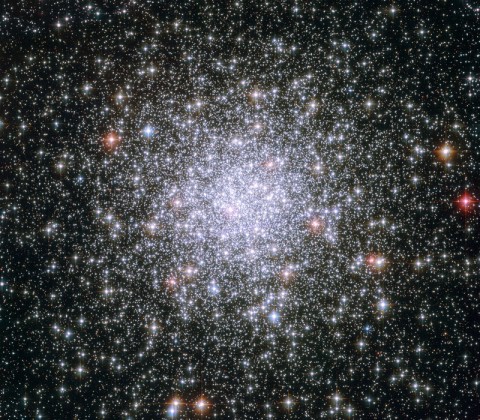NASA’s Goddard Space Flight Center
 Greenbelt, MD – This dazzling image shows the globular cluster Messier 69, or M 69 for short, as viewed through the NASA/ESA Hubble Space Telescope. Globular clusters are dense collections of old stars.
Greenbelt, MD – This dazzling image shows the globular cluster Messier 69, or M 69 for short, as viewed through the NASA/ESA Hubble Space Telescope. Globular clusters are dense collections of old stars.
In the picture below, foreground stars look big and golden when set against the backdrop of the thousands of white, silvery stars that make up M 69.

Because the stars in globular clusters are ancient, their metallic abundances are much lower than more recently formed stars, such as the Sun. Studying the makeup of stars in globular clusters like M 69 has helped astronomers trace back the evolution of the cosmos.
M 69 is located 29 700 light-years away in the constellation Sagittarius (the Archer). The famed French comet hunter Charles Messier added M 69 to his catalogue in 1780. It is also known as NGC 6637.
The image is a combination of exposures taken in visible and near-infrared light by Hubble’s Advanced Camera for Surveys, and covers a field of view of approximately 3.4 by 3.4 arcminutes.


